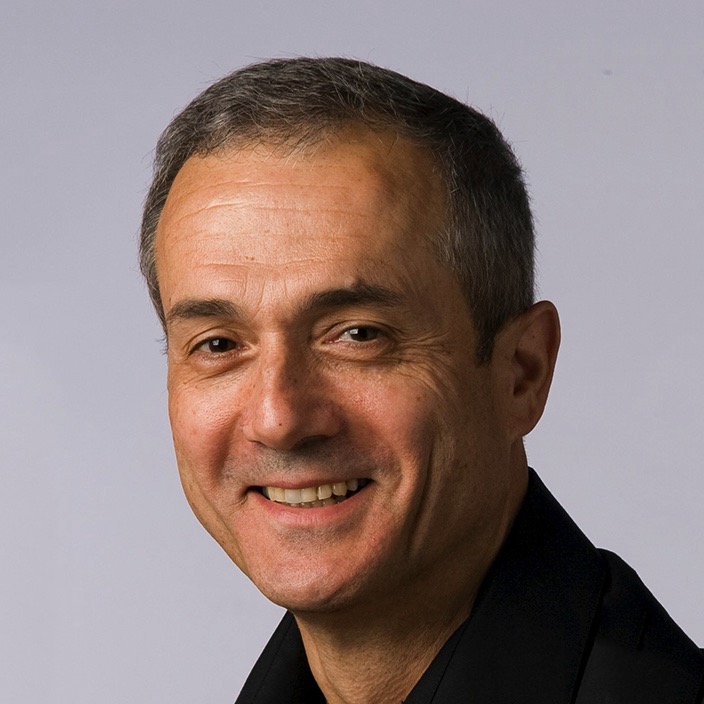
Small electronics would not be possible without the ability to cool your laptop.
Adrian Bejan had to find a way to cool smaller and smaller electronics without using fans or coolants. Faced with this challenge, he discovered how to flow heat away from small electronics and follow natural pathways allowing it to escape on its own. This discovery not only keeps your laptop from overheating (and allows portable electronics to even exist), it sparked an entire line of thought for Bejan about how natural systems branch and flow. As he explains, "The designs we see in nature are not the result of chance. They arise naturally, spontaneously because they enhance access to flow in time." A river delta, for example, begins with a single stream, then develops tributaries and branches, increasing in complexity as water continues to flow and seek easier paths. From this, “constructal theory” was born.
Find out more about Adrian Bejan, 2018 Benjamin Franklin Medalist in Mechanical Engineering.
Adrian Bejan had to find a way to cool small electronics without using traditional methods. Faced with this challenge, he discovered how to flow heat away from small electronics and follow natural pathways allowing it to escape on its own. This discovery not only keeps your laptop from overheating, it sparked an entire line of thought for Bejan about how natural systems branch and flow called “constructal theory.”
It is rather unusual for a mechanical engineer to be credited with conceiving a new theory in physics. Engineers, after all, generally specialize in coming up with new applications of physical laws, leaving the fundamental principles to the physicists. But Adrian Bejan is more than a typical engineer.
Born in Romania, Bejan excelled as a mathematics prodigy from an early age. At 19, he received a scholarship to the Massachusetts Institute of Technology, where he earned his undergraduate and graduate degrees in mechanical engineering, specializing in the problems of thermodynamics—the relationships between heat and other forms of energy. After a fellowship at the University of California, Berkeley, and a faculty position at the University of Colorado, he became a full professor at Duke University in 1984, already making major contributions to the field of thermal sciences. He published several textbooks which have become seminal works in thermodynamics. In 1982, his very first book introduced the concept of entropy generation minimization, which combines heat transfer, fluid mechanics, and thermodynamics principles into simple models to facilitate engineering design. His colleagues even coined the "Bejan number" (Be) after him, a mathematical term for a certain ratio used in thermodynamics in combination with fluid mechanics.
It was in 1996, however, that he published what became his most notable and daringly original work to date. At a conference a year earlier in France, he heard Nobel Laureate Ilya Prigogine discuss branching patterns found in nature, such as in trees or in the vascular systems of animals. He found himself disagreeing with Prigogine's assertion that such phenomena were merely coincidental. Bejan was certain that there had to be an underlying principle at work that governed it all. He found that principle in what he termed “constructal theory.”
Constructal theory states that a finite system can persist only if it evolves in accordance with the currents that flow through it. As he explains, "The designs we see in nature are not the result of chance. They arise naturally, spontaneously because they enhance access to flow in time." A river delta, for example, begins with a single stream, then develops tributaries and branches, increasing in complexity as water continues to flow and seek easier paths. Constructal theory is grounded in the laws of thermodynamics, but has shown applicability far beyond, through a wide, and often surprising, range of fields. Bejan has used constructal theory to show how patterns of social interaction and economics evolve in an analogous fashion, holding implications for the social sciences and demonstrating the fundamental physics underlying even these disciplines.
It sounds simple, but in that simplicity is its power, as has been demonstrated in the work of Bejan and others. Emphasizing the ongoing evolution of design in nature over both short and long time scales, constructal theory points the way to engineering approaches consistent with those observed in the natural world and allows for more efficient and sustainable approaches to the design of electronics, heating systems, vehicles, traffic management, and urban infrastructure, among many other areas.
As with any new and unorthodox theory, acceptance of Bejan's constructal theory faced challenges, but the more than 5,000 papers published on constructal theory since 1996 belie its critics, as do the practical engineering applications it has inspired. Its influence has even extended into politics—Bejan was consulted by the British government on the application of constructal theory to the flow of information between citizens and the government.
While his recognition by 10 Downing Street demonstrates how Bejan's professional influence has ranged into nearly every branch of knowledge, his impact within his own field of engineering is impressive enough. With 28 books and more than 600 papers to his credit, he has also mentored a generation of engineering students at Duke, many of whom have gone on to distinguished careers. Adrian Bejan's career serves as a unique example of how an engineer can make lasting and seminal contributions that transcend the conventional barriers that separate disparate fields and instead unify them in ways that benefit and complement them all.
Information as of March 15, 2018

